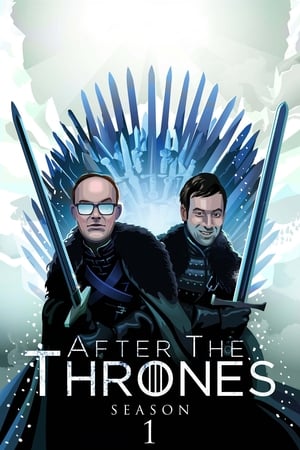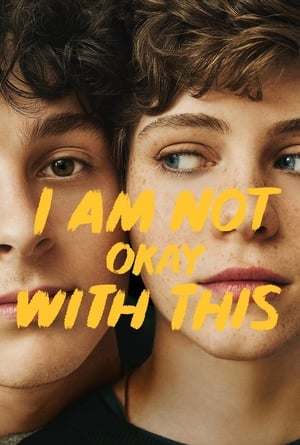Tropes vs. Women in Video Games
Tropes vs. Women in Video Games aims to examine limiting, sexist patterns associated with female representations in games, and to illuminate how these patterns reinforce and perpetuate harmful attitudes about women in our culture.
Type: tv
Season: 2
Episode: N/A
Duration: N/A minutes
Release: 2013-03-07
Rating: 2.75
Season 1 - Tropes vs. Women in Video Games
2013-03-07
This video explores how the Damsel in Distress became one of the most widely used gendered cliché in the history of gaming and why the trope has been core to the popularization and development of the medium itself. As a trope the Damsel in Distress is a plot device in which a female character is placed in a perilous situation from which she cannot escape on her own and must then be rescued by a male character, usually providing a core incentive or motivation for the protagonist’s quest.
2013-05-28
This is the second in a series of three videos exploring the Damsel in Distress trope in video games. In this installment we look at “dark and edgy” side of the trope in more modern games and how the plot device is often used in conjunction with graphic depictions of violence against women. Over the past decade we’ve seen developers try to spice up the old Damsel in Distress cliche by combining it with other tropes involving victimized women including the disposable woman, the mercy killing and the woman in the refrigerator.
2013-08-01
This is the third installment in our three part mini-series exploring the Damsel in Distress trope in video games. In this episode we examine the rare Dude in Distress role reversal and then take a look at the use of “ironic sexism” in retro inspired indie games. We conclude with an investigation of titles that attempt to subvert or deconstruct the traditional damsel narrative.
2013-08-01
In this episode we examine the Ms. Male Character trope and briefly discuss a related pattern called the Smurfette Principle. We’ve defined the Ms. Male Character Trope as: The female version of an already established or default male character. Ms. Male Characters are defined primarily by their relationship to their male counterparts via visual properties, narrative connection or occasionally through promotional materials.
2014-06-16
In this episode we explore the Women as Background Decoration trope which is the subset of largely insignificant non-playable female characters whose sexuality or victimhood is exploited as a way to infuse edgy, gritty or racy flavoring into game worlds. These sexually objectified female bodies are designed to function as environmental texture while titillating presumed straight male players. Sometimes they’re created to be glorified furniture but they are frequently programmed as minimally interactive sex objects to be used and abused.
Sexual objectification is the practice of treating or representing a human being as a thing or mere instrument to be used for another’s sexual purposes. Sexually objectified women are valued primarily for their bodies, or body parts, which are presented as existing for the pleasure and gratification of others.
2014-08-25
This is the second episode exploring the Women as Background Decoration trope in video games. In this installment we expand our discussion to examine how sexualized female bodies often occupy a dual role as both sexual playthings and the perpetual victims of male violence.
The Women as Background Decoration trope which is the subset of largely insignificant non-playable female characters whose sexuality or victimhood is exploited as a way to infuse edgy, gritty or racy flavoring into game worlds. These sexually objectified female bodies are designed to function as environmental texture while titillating presumed straight male players. Sometimes they’re created to be glorified furniture but they are frequently programmed as minimally interactive sex objects to be used and abused.
2015-03-31
In the debut episode of our series on Positive Female Characters, we celebrate the Scythian, the protagonist of Capybara Games’ 2011 release Superbrothers: Sword & Sworcery EP. This episode examines how Sword & Sworcery employs widely recognizable action adventure game tropes to make the Scythian’s quest feel like the stuff of video game legend, and how in doing so, it asserts that women can fill the role of the mythic hero as effectively as men can.
2015-05-11
This episode of our series on Positive Female Characters focuses on Jade, the protagonist of Ubisoft’s 2003 action-adventure game Beyond Good & Evil. We examine how plot elements, gameplay mechanics and smart dialogue work together to make Jade a relatable protagonist who is defined by her professional talents, her altruistic convictions, and her bonds with friends.
2015-08-31
Content Warning: This educational episode contains game footage of a graphic sexual nature.
This episode explores the numerous ways in which the Women as Reward trope manifests in video games. The trope occurs when women or women’s bodies are employed as rewards for player actions, a pattern which frames female bodies and sexuality as collectible or consumable and positions women as status symbols designed to validate the masculinity of presumed straight male players. We then discuss how this trope both reflects and reinforces the pervasive, socially constructed mentality of male entitlement that operates in the background of our culture.
2015-09-14
This totally free supplemental add-on content pack for our Women as Reward video examines how women’s bodies are used not just as a reward for in-game actions but also, via paid downloadable content, as a reward for spending actual money. We then address the most common defense of this kind of objectification and commodification of women’s bodies: the argument that “sex sells.”
This video is intended as a supplement to our Women as Reward video, which we recommend watching first.
Season 2 - Tropes vs. Women in Video Games
2016-01-19
This episode examines the ways in which designers often employ camera angles and clothing choices as tools to deliberately sexualize and objectify female protagonists of third-person games. To illustrate that this is no accident, we contrast the ways in which women’s butts are frequently emphasized with the great lengths often taken to avoid calling attention to the butts of male characters. We then present some examples of female-led third-person games that humanize rather than objectify their protagonists.
2016-03-31
This episode examines the ways in which character animation, which can be a wonderful tool for all sorts of creative expression, is often used in limiting and stereotypical ways to sexualize female characters. We then illustrate that this is just one of many ways that games are predominantly designed around the male gaze, and discuss why male characters who may be depicted wearing little clothing are not objectified in the way that female characters are.
2016-06-06
This episode explores the ways in which female characters are frequently placed in wildly impractical, sexualizing outfits specifically designed to objectify them for the titillation of the presumed straight male player. We then discuss the problems inherent in linking the sexualization of female characters to notions of female empowerment, and examine what positive depictions of female sexuality and sexual desire in games might look like.
2016-07-27
This episode examines the general lack of female representation among standard enemies as well as in the cooperative and competitive multiplayer options of many games, and the ways in which, when female enemies do exist, they are often sexualized and set apart by their gender from the male enemies who are presented as the norm. We then highlight a few examples of games that present female enemies as standard enemies who exist on more-or-less equal footing with their male counterparts.
2016-09-01
This episode examines the very limited range of female body types commonly seen in games, contrasting this with the much wider range of physiques that male characters frequently possess. We then illustrates that, when female characters appear who do have a body type that is notably different from the slender physique that games establish as the standard, these bodies are sometimes presented as a joke, or as a twisted transgression of social standards and expectations. We examine how this limited range extends to the age of female characters as well, before highlighting a few examples of games that have positive representations of women with different body types and women who are older.
2016-09-28
This episode explores how female villains in games very often function to demonize femaleness itself, drawing on patterns of female representation that have roots in creatures from myth and folklore which reinforced misogynistic attitudes about women in their own time. We look at Grotesquely Female characters: those who communicate that femaleness is abhorrent and disgusting, and at Sinister Seductresses: those who suggest that female sexuality is inherently threatening and misleading. We then explore characters who blend these two notions, initially appearing attractive and alluring, only to have their true form revealed as monstrous and deadly. Finally, we demonstrate that it’s entirely possible to have great female villains who don’t serve to reinforce false, misogynistic ideas about women as a whole.
2017-01-31
This episode explores the ways in which sexist, racist stereotypes about black women and tribal cultures that date back for centuries are often still perpetuated today in representations of women from indigenous and tribal cultures in video games. These representations link sexism and racism to exotify these women, depicting them as primitive, savage, and hypersexualized. We examine the historical roots of these racist and sexist myths in America and the damage they continue to cause, and demonstrate how these representations are acts of cultural appropriation. We then conclude by sharing some examples of games that challenge damaging stereotypes rather than reinforcing them by offering representations of people and cultures that are honest, respectful, and humanizing.
2017-04-27
This episode examines how female sidekicks and companions in games are often designed to function as glorified gatekeepers, helpless burdens, and ego boosters, a pattern that works to reinforce oppressive notions about women as the ones in need of protection and men as the ones in control, who take action and do the protecting.
YOU MAY ALSO LIKE



















